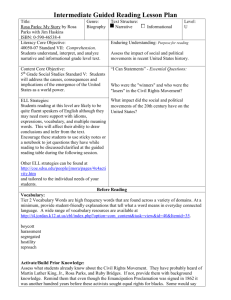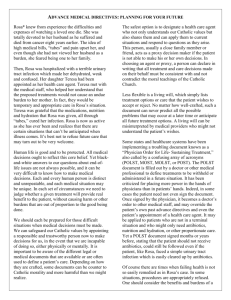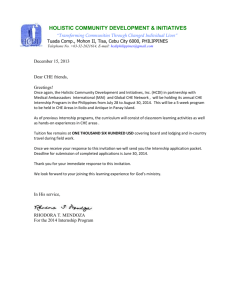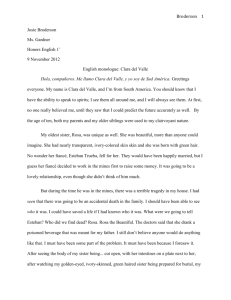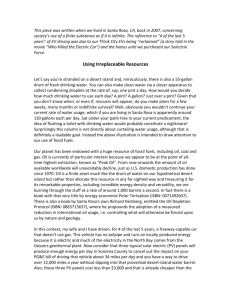ASO READER'S NOTES Title: My Sister Rosa Author: Justine
advertisement
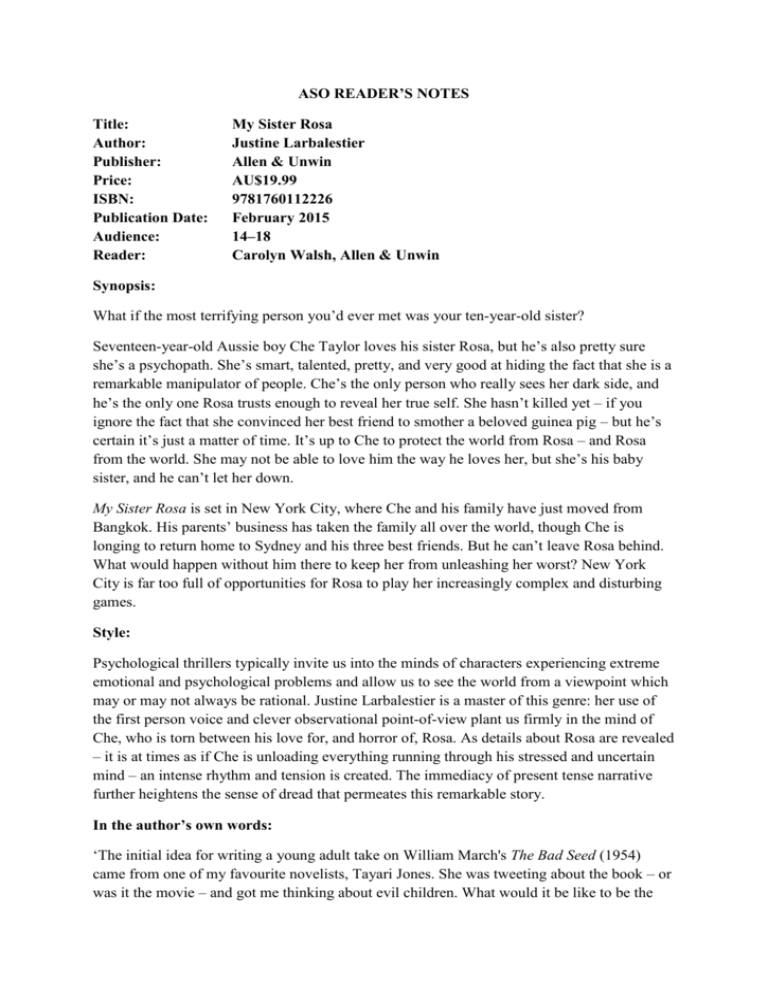
ASO READER’S NOTES Title: Author: Publisher: Price: ISBN: Publication Date: Audience: Reader: My Sister Rosa Justine Larbalestier Allen & Unwin AU$19.99 9781760112226 February 2015 14–18 Carolyn Walsh, Allen & Unwin Synopsis: What if the most terrifying person you’d ever met was your ten-year-old sister? Seventeen-year-old Aussie boy Che Taylor loves his sister Rosa, but he’s also pretty sure she’s a psychopath. She’s smart, talented, pretty, and very good at hiding the fact that she is a remarkable manipulator of people. Che’s the only person who really sees her dark side, and he’s the only one Rosa trusts enough to reveal her true self. She hasn’t killed yet – if you ignore the fact that she convinced her best friend to smother a beloved guinea pig – but he’s certain it’s just a matter of time. It’s up to Che to protect the world from Rosa – and Rosa from the world. She may not be able to love him the way he loves her, but she’s his baby sister, and he can’t let her down. My Sister Rosa is set in New York City, where Che and his family have just moved from Bangkok. His parents’ business has taken the family all over the world, though Che is longing to return home to Sydney and his three best friends. But he can’t leave Rosa behind. What would happen without him there to keep her from unleashing her worst? New York City is far too full of opportunities for Rosa to play her increasingly complex and disturbing games. Style: Psychological thrillers typically invite us into the minds of characters experiencing extreme emotional and psychological problems and allow us to see the world from a viewpoint which may or may not always be rational. Justine Larbalestier is a master of this genre: her use of the first person voice and clever observational point-of-view plant us firmly in the mind of Che, who is torn between his love for, and horror of, Rosa. As details about Rosa are revealed – it is at times as if Che is unloading everything running through his stressed and uncertain mind – an intense rhythm and tension is created. The immediacy of present tense narrative further heightens the sense of dread that permeates this remarkable story. In the author’s own words: ‘The initial idea for writing a young adult take on William March's The Bad Seed (1954) came from one of my favourite novelists, Tayari Jones. She was tweeting about the book – or was it the movie – and got me thinking about evil children. What would it be like to be the older sibling of a psychopathic child? I reread the book, which was as good as I remembered, and started to wonder about how much the research on psychopaths has changed since the 1950s. ‘At the same time I was noticing the use of the term sociopath as if it were not a synonym for psychopath. What was that about? I wondered how these terms connected to antisocial personality disorder, which is the term used to refer to the condition in the Diagnostic and Statistical Manual of Mental Disorders. ‘After [much] reading [about the causes of these disorders] I was left with the conclusion that the answer to nurture versus nature is both. Psychopaths, like all humans, are a product of their genes, their environment and their brain morphology. None of those things are fixed. The shape of our brain changes as we grow and can be shaped by our environment, by malnutrition, by accidents. Recent research in the field of epigenetics is showing us that our genes aren't fixed either. And, of course, no one's environment is fixed. We are affected not just by the obvious stuff like where we live, our family, school, friends, but also, it turns out, by where we travel, what we read, and so many other variables. Which is how two siblings growing up in the same family can be radically different despite their shared environment and genes.’ Justine Larbalestier Author Background: Justine Larbalestier is the author of Razorhurst, which won the Aurealis Award for Best Horror Novel and was shortlisted for both the NSW and Victorian Premiers' Literary Awards, and Liar, which won the YA Western Australian Premier's Book Award, the YA Sisters in Crime Davitt Award and was shortlisted for the CBCA Older Readers award, among many other honours. She also edited the collection, Zombies Versus Unicorns with Holly Black. Justine lives in Sydney where she gardens, boxes, and watches too much cricket, and sometimes in New York City where she wanders about public parks hoping they'll let her do some gardening and misses cricket a lot. Suggestions for Classroom Discussion and Application: Pre-reading Research Topics Define the following: antisocial personality disorder, psychopathy, sociopathy, epigenetics, neuroplasticity. Discuss the arguments for and against nature versus nurture. Cover up the title and subtitle on the front cover of the book and concentrate on the image of the child’s hands holding a small bird. How would you describe this image? Do words such as peaceful, gentle and caring seem appropriate to describe this image? Now uncover the title and subtitle and look at the image again. Do the words change the way that we ‘read’ the image? After reading Chapter One discuss the emotions that you felt as the chapter progressed. Would you say that you felt tense, anxious and disturbed while reading the chapter? What elements in the story made you feel that way? Consider the following and analyse if they may have created tension: - Rosa initially seems normal but changes rapidly - Rosa and Che’s dialogue moves from the mundane to the unexpected as the chapter progresses. - The reader ‘enters’ Che’s mind but is ‘locked’ out of Rosa’s mind. In Chapter Two Che makes a checklist of antisocial personality disorder attributes: callousness, disinhibition, fearlessness and charisma. Describe incidents in the book that support his theory that Rosa has this disorder. Retell the story from David’s point-of-view. Think carefully about how he might describe Sally, Che and Rosa, his reactions to moving to New York, the incident involving peanut butter and the eventual murder of Maya. Compare and contrast Che and Rosa. Are they more similar than different? Is it possible to only have one kind of love? In Chapter 27 Leilani McBrunight declares her parents can’t be good parents because they are too in love with each other to really care about their children. What happens in the story to suggest this might be the case with David and Sally? How does Che’s love for Sojourner differ from his love for Rosa? Which events in the story support the notion that none of us can escape our genes? Which do not support this notion and suggest that we are capable of changing ourselves throughout life?



